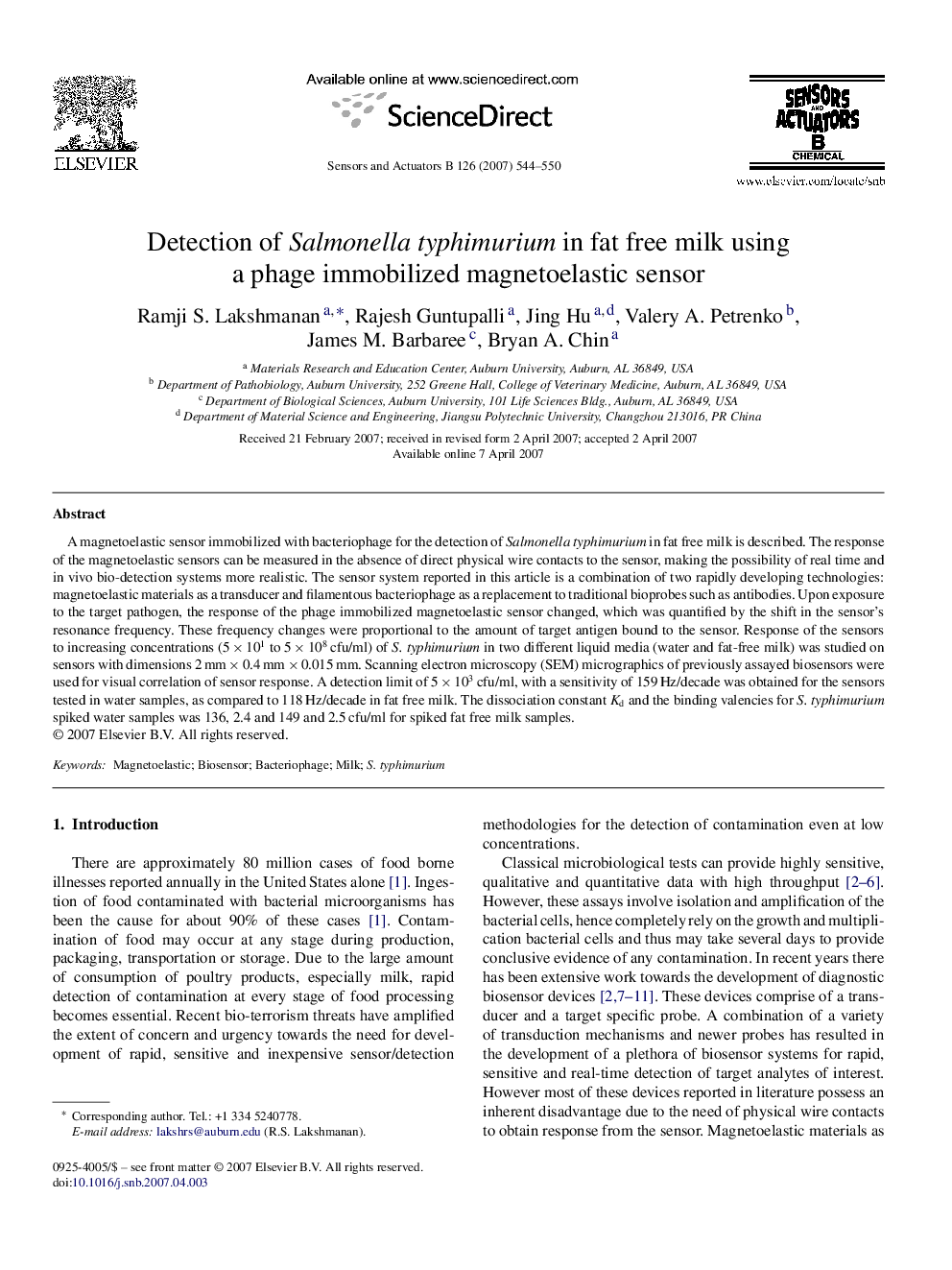| Article ID | Journal | Published Year | Pages | File Type |
|---|---|---|---|---|
| 746764 | Sensors and Actuators B: Chemical | 2007 | 7 Pages |
A magnetoelastic sensor immobilized with bacteriophage for the detection of Salmonella typhimurium in fat free milk is described. The response of the magnetoelastic sensors can be measured in the absence of direct physical wire contacts to the sensor, making the possibility of real time and in vivo bio-detection systems more realistic. The sensor system reported in this article is a combination of two rapidly developing technologies: magnetoelastic materials as a transducer and filamentous bacteriophage as a replacement to traditional bioprobes such as antibodies. Upon exposure to the target pathogen, the response of the phage immobilized magnetoelastic sensor changed, which was quantified by the shift in the sensor's resonance frequency. These frequency changes were proportional to the amount of target antigen bound to the sensor. Response of the sensors to increasing concentrations (5 × 101 to 5 × 108 cfu/ml) of S. typhimurium in two different liquid media (water and fat-free milk) was studied on sensors with dimensions 2 mm × 0.4 mm × 0.015 mm. Scanning electron microscopy (SEM) micrographics of previously assayed biosensors were used for visual correlation of sensor response. A detection limit of 5 × 103 cfu/ml, with a sensitivity of 159 Hz/decade was obtained for the sensors tested in water samples, as compared to 118 Hz/decade in fat free milk. The dissociation constant Kd and the binding valencies for S. typhimurium spiked water samples was 136, 2.4 and 149 and 2.5 cfu/ml for spiked fat free milk samples.
